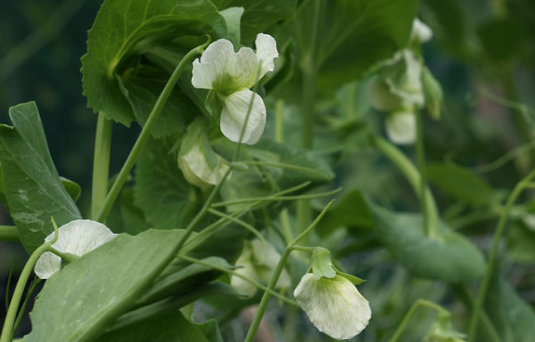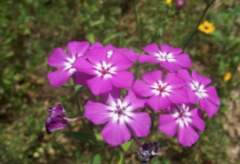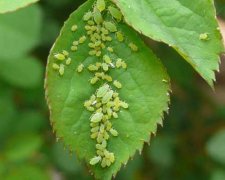Introduction of garden pea planting plan, pea interplanting plan and pea cropping method
Garden peas, including shell peas, snow peas and chickpeas, have two characteristics that make them strong candidates for super-high-yield planting plans. First, peas go up to the vines, and their vertical posture makes it possible to plant low crops at their roots. Secondly, in most climatic conditions, peas grown in spring are produced in midsummer, leaving a good growing season to grow another major vegetable, peas. Whether you're talking about intercropping (growing a variety of vegetables in a shared space) or continuous planting (following one vegetable and another in the same season), beans offer a lot of opportunities for innovation.
Every year, I grow three kinds of peas (snow beans, peas and peas), although these peas have never been in the kitchen because we eat them in the garden. This makes it all the more important to maximize the space we give to peas. The pods are full and are the most productive variety. In a good year, our frozen peas are long enough to spring.
Pea interplanting plan
All peas, including short varieties, need some kind of support. Your scaffolding opportunities are endless because peas will use their powerful tendrils to stick to almost any support. Your frame design has a lot to do with any interplanting scheme. If you have an upright grid in the middle of the bed, the available interplanting space is outside the peas. These two simple pea planting plans (on the right, on the top bed) show how you can grow leafy green vegetables, such as lettuce, arugula or spinach, or shallow-rooted radishes and onions. I like leafy greens best because they cover the pea roots and help keep them cool. To avoid interfering with the pea roots, I chopped up these salad vegetables instead of pulling them out.
Peas can climb almost anything.
If you plant the peas into wide-spaced rows and provide a sloping diagonal grid, the plan will change. This creates a hidden place in the middle of the line where you can grow onions or potatoes (see above, two beds at the bottom). In a climate where a mild spring climate does not last long enough, this is a good way to get a good new summer potato crop, even though the weather starts hot early.
Pea continuous cropping
It's natural to wait for the pea plant to produce each last pea, but you need a more ruthless attitude to stop your peas and make room for new crops. Many gardeners (including me) like to track peas with cucumbers or pumpkins, which can use scaffolding for peas. You don't need to pull out the peas, just cut them off on the ground. Any unused nitrogen nodules on the pea roots will be in place to help cultivate the next crop.
Pea flower
Several gardeners I know conduct covert operations in their pea fields, cutting off pea plants and inserting cucumber or pumpkin seedlings while the remaining peas are still growing. How do you know when to start the successor? Regardless of their type and size, peas eventually run out of steam, which is evident when new pods form on stem tips rather than lateral branches. Pods in peas always grow from the bottom of the plant to the top in a predictable order. When only pods are left at the top of the stem, it's time to change.
If you are going to make a complete overhaul of the pea bed (which is inevitable when interplanting potatoes), use carrots as your next crop. A good friend I know and one of the best vegetable gardeners strongly recommends this inheritance. In the lovely autumn climate, you can also plant cauliflower after peas. Please share what is useful to you in your garden, because few people can get enough peas.

- Prev

Drummond's Phlox plants, points for attention in the annual Fulukao planting method in the garden
Annuals add interesting color and drama to the spring and summer gardens. Drummond's Phlox plants also offer intoxicating fragrances and crimson flowers. It is a small, dense plant that can easily grow from seeds under appropriate conditions.
- Next

What are the main host plants for aphids? Symptoms of Aphid Damage to Plants Prevention Issues
Aphids this kind of pest, we all know, this kind of pest harm is also relatively large, then you know how to control this kind of pest? If you want to know, take a look together! Host plants: in the wild: wild plants, shrubs, trees
Related
- A course of planting techniques and methods on how to grow carrots
- How to plant the latest tulips?
- Is it better to pick tea in the morning or in the afternoon? When is the best time for tea to be picked? what is the third or fifth tea?
- Launch Yuanxiao Happy combination Haocha + Tea Yuan healthy Taste
- Penghu Tourism "Fireworks 20 Parade with You"
- 2022 West Lake Happiness holds "Digital Revitalization Voucher" and draws iphone13 and laptop.
- Banqiao Fuzhou social houses are designed to change start-up combined with police elimination to create a safe and livable environment
- The convenient measure of "mechanical weeding" in Xinbei has been abused and the Agriculture Bureau has imposed heavy penalties on the illegal land consolidation.
- Changgeng University Joins Hands with Four Memory Factories to Rescue Memory Talent Shortage
- The list of Taiwan's top 100 MVP managers is listed by the Director-General of the Farmers' Association of Sanxia District.

